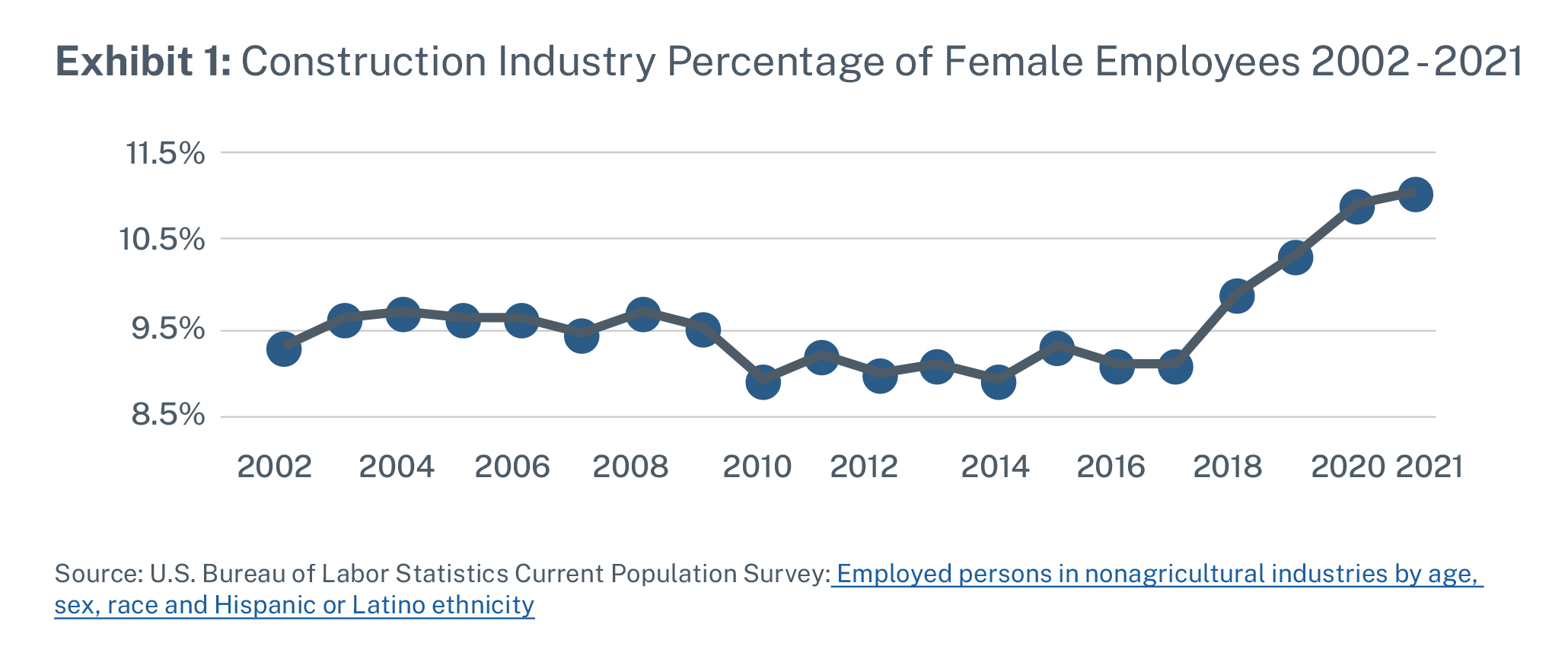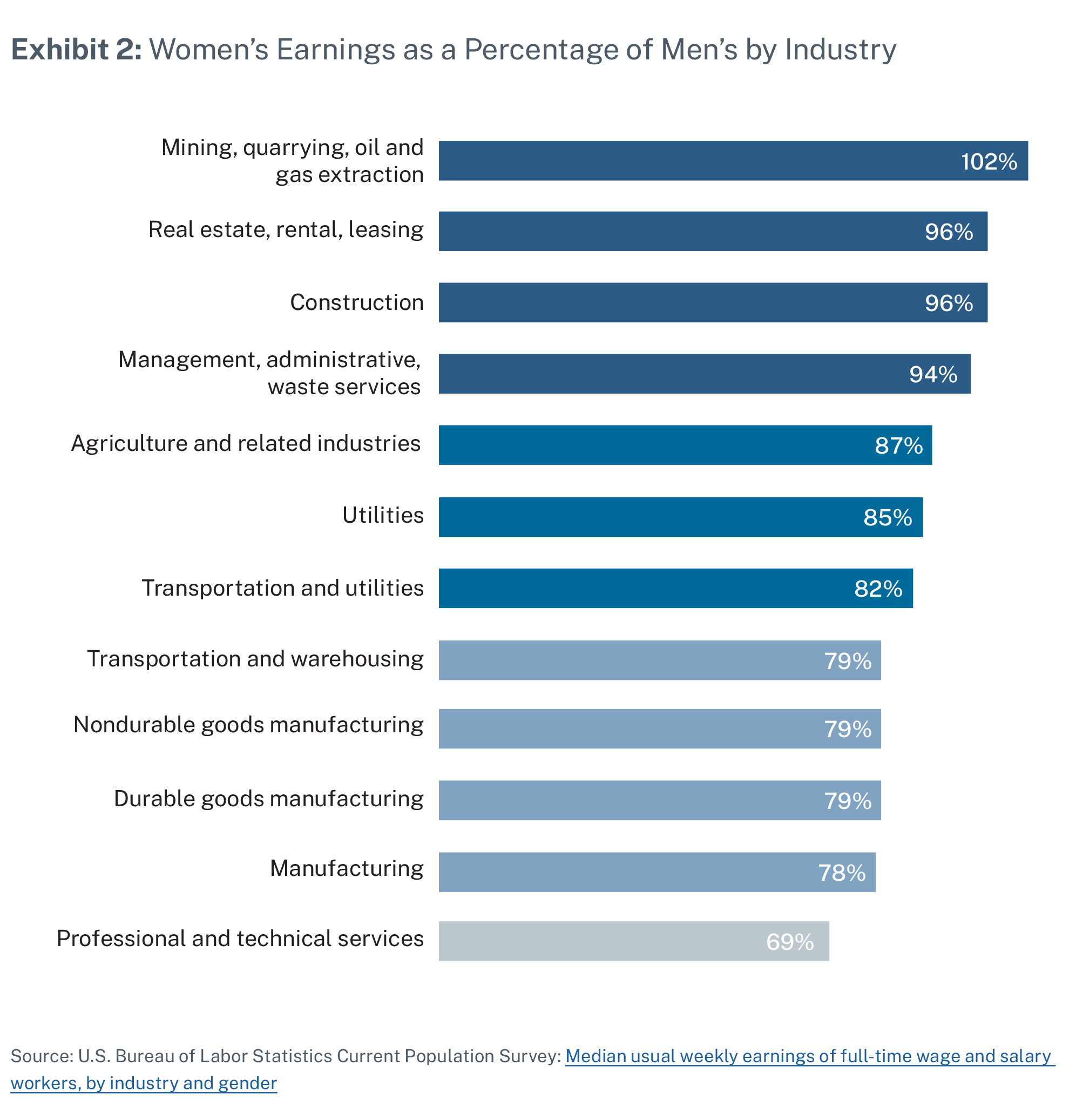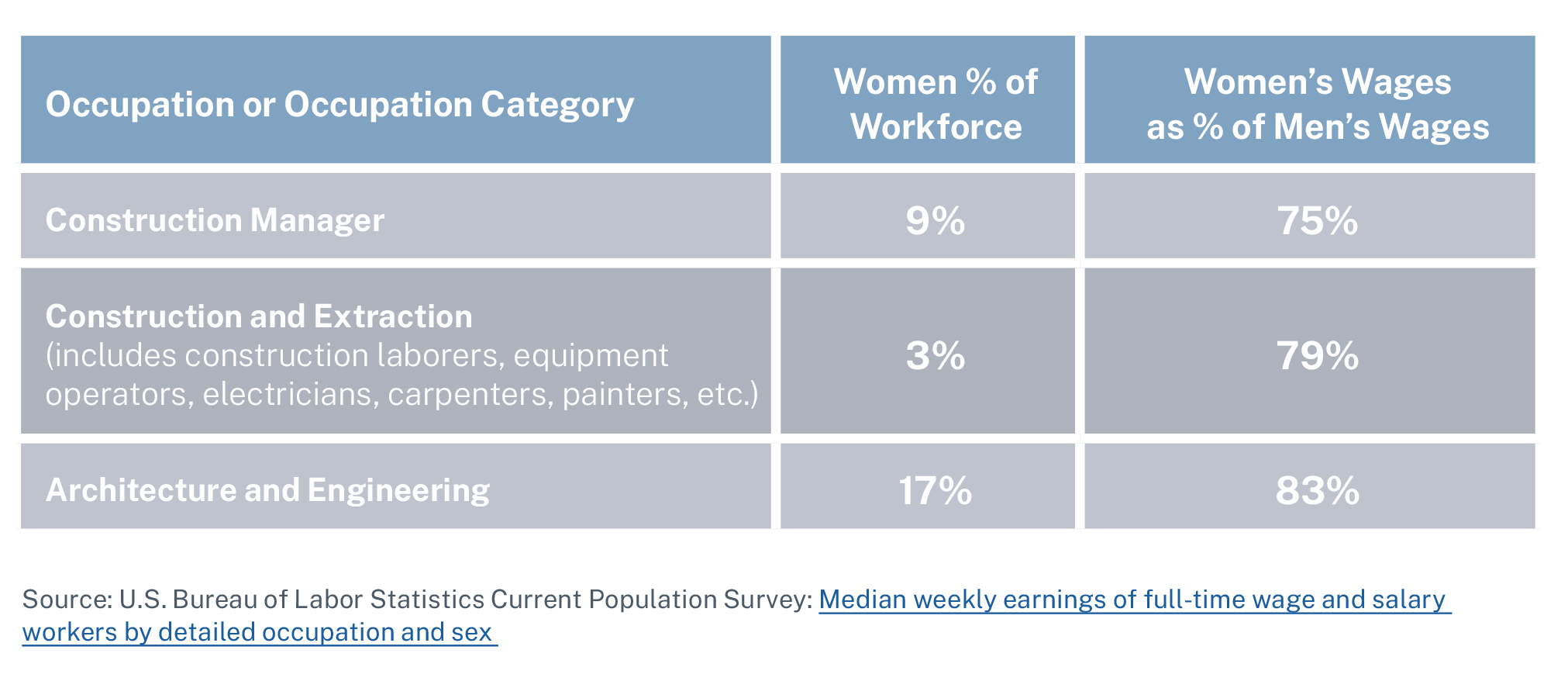Closing the Gender Pay Gap: Why Women May Be the Key to Solving E&C Labor Challenges

It is no secret that the built environment has long been male-dominated.
In fact, the most recent Bureau of Labor Statistics (BLS) data indicates that women currently represent 11% of the construction industry. However, BLS data also indicates that women are entering engineering and construction fields at higher rates than ever before.
While 11% may seem dismal, it is up 20% over the last 10 years, trending in the direction leaders recognize as necessary to building a strong workforce. With the industry currently needing to fill 362,000 vacant positions, women are a critical part of reducing labor shortages.
”Women are increasingly entering key roles in the construction industry,” said Lauline Mitchell, president of the National Association of Women in Construction (NAWIC). “Employers are well served when they create an inclusive environment that encourages women to enter and stay in the industry. NAWIC’s core purpose is to strengthen and amplify the success of women in the construction industry by providing education, community and advocacy. One component of that is making sure women are paid equitably with their male counterparts.”
Interestingly, while the labor participation rate gap is one of the highest, the pay gap in the construction industry is one of the lowest. The average woman working in the U.S. makes 82% of the average man’s pay; but in the construction industry, the average woman makes 96% of the average man’s pay level.

But that’s not the complete picture. Women in engineering and construction most frequently hold office and managerial roles, which are better paid than entry-level field roles.
When you look at specific roles in construction, the gaps become more evident. Female construction managers, common field occupations, and architects and engineers make 75%, 79% and 83%, respectively, of that of their average male counterparts.

While it is important to recognize and consider the wage gap in construction, some of the discrepancies can be attributed to characteristics like years of experience and tenure. Of course, few in the industry know a woman nearing retirement age working in the field as a carpenter while many know a man nearing retirement in those positions. Additionally, BLS research revealed much of the overall earnings gap between genders can be explained by age and hours worked.
“While the data leads in varying directions, one thing is for certain, the construction industry needs to be more inclusive of women, even starting at a young age,” said Mitchell. “At NAWIC, several of our programs are targeted toward young women. If our chapters can reach a Girl Scout troop with our Block Kids Building Program, an adolescent with our Create Design Build! or Design Drafting days, or a teen by attending Camp NAWIC, we just might get one of those young women to consider the construction field as an option.”
Implementing Changes
Given the gaps, it’s important for companies to review their own salaries and benefits to ensure equality where appropriate. Here are some other ways you can enact changes.
- Follow NAWIC’s lead: Where possible, include your female workforce in career days and other recruiting events. Make sure your campus recruiting efforts encourage all qualified candidates to apply.
- Provide training and mentorship programs: When companies provide mentoring and coaching programs for their employees, research indicates company performance improves and those who have a mentor at work are better paid, more likely to be promoted, and happier with their jobs than those who lack mentors.
- Recruit a diverse workforce: Continue to focus on recruiting a diverse workforce – not only by gender, but by other external (race, age, etc.) and internal (background, thought, etc.) characteristics. Studies have shown that diverse teams are better at solving problems, and companies are more profitable when they employ workers with varying backgrounds, perspectives and skills.
- Take a hard look at your own pay practices: Statistical analyses can be conducted to determine nondiscriminatory reasons for pay differentials in your workforce, identify areas of concern and increase pay where necessary. Even when valid statistical analyses are not possible, employee pay comparisons can be made across titles, levels and pay ranges.
- Develop pay ranges: Having well-designed pay ranges calibrated to the areas and industries within which you compete for talent can assist human resources and managers in making better and more data-driven pay decisions. Pay ranges are not only good practice, but also increasingly necessary for regulatory compliance. In 2022, seven states and New York City required employers to provide pay ranges when requested or automatically during the recruiting process, and additional states have similar bills under consideration.
- Don’t perpetuate historical discrimination: At least 14 states enacted laws that forbid employers from asking prospective employees about their pay histories. The logic is that a past company or manager may have had discriminatory pay practices that could be perpetuated by offering similar or slightly higher compensation. Rather, it is best to rely upon an assessment of the candidate’s knowledge, skills and abilities to determine where she or he fits in your company’s pay ranges.
- Review your policies: Do your policies and procedures support women in your workforce? Do you have a maternity policy? Is it compliant with the Family and Medical Leave Act? Do you need to update it? While nearly unheard of even five years ago, there is an increasing focus in the construction and engineering industry on providing workplace flexibility, such as work-from-home arrangements or flexible work schedules when feasible.
- Reflect on your own internal biases and train managers: Create a work environment and culture that encourages equitable pay for employees from all backgrounds. Multiple studies conducted by researchers from Carnegie Mellon determined that people, even other women, viewed women who negotiated for higher compensation more negatively than they did men.
With greater competition than ever for talent, coupled with an unprecedented regulatory focus on pay transparency, now is the time to ensure your pay practices and work environment create equity. This will help your company attract, retain and reward your employees – your most valuable asset.
Companies that make efforts to diversify their workforces and recruit employees from various backgrounds will be better able to compete in a continuously evolving market. As the labor shortage continues to be a problem across roles in construction, think about how you can create an environment that encourages more women to enter the field.




